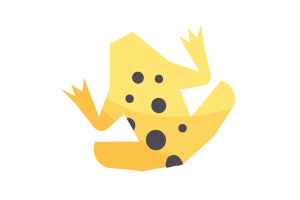Case Study
Frog Census
Monitoring water health
Partners Involved: Frogs, Scientists, Citizen Scientists
Type of Partnership: Win-Win for Public and Planet
Partnership Models: Data Partner, Sensor
Using frog health as an indicator of water health is mutually reinforcing and beneficial for Public water consumption, as well as the entire wetland ecosystem—including the frogs themselves.
Frog and toad populations are declining around the world due to habitat loss, pollution and disease. A healthy wetland provides frogs with an ideal habitat, while frogs and toads serve as a source of food for other animals. Frogs also help control insect populations, while tadpoles eat large quantities of algae and plankton, ultimately maintaining a healthy nutrient balance in wetland ecosystems.
Frogs also provide another key indicator of water health. Their skin soaks up chemicals in the water so water that is contaminated makes the frogs ill. Therefore, the sickness—or absence—of frogs and toads in a wetland may indicate something is wrong.
The Frog Census Program collects data from callers who record the vocal frogs through an app. Professional ecologists identify the species of frogs and add them to an atlas which is used to manage the health of rivers and creeks in Australia. This program provides an indication of water quality in local waterways—mutually reinforcing the health of humans, the wetland ecosystem, and the frogs themselves.
SDGs Targeted: SDG 6 on Clean Water & Sanitation, SDG 15 on Life on Land
Links & Sources:
Case Study
Frog Census
Monitoring water health
Partners Involved: Frogs, Scientists, Citizen Scientists
Type of Partnership: Win-Win for Public and Planet
Partnership Models: Data Partner, Sensor
Using frog health as an indicator of water health is mutually reinforcing and beneficial for Public water consumption, as well as the entire wetland ecosystem—including the frogs themselves.
Frog and toad populations are declining around the world due to habitat loss, pollution and disease. A healthy wetland provides frogs with an ideal habitat, while frogs and toads serve as a source of food for other animals. Frogs also help control insect populations, while tadpoles eat large quantities of algae and plankton, ultimately maintaining a healthy nutrient balance in wetland ecosystems.
Frogs also provide another key indicator of water health. Their skin soaks up chemicals in the water so water that is contaminated makes the frogs ill. Therefore, the sickness—or absence—of frogs and toads in a wetland may indicate something is wrong.
The Frog Census Program collects data from callers who record the vocal frogs through an app. Professional ecologists identify the species of frogs and add them to an atlas which is used to manage the health of rivers and creeks in Australia. This program provides an indication of water quality in local waterways—mutually reinforcing the health of humans, the wetland ecosystem, and the frogs themselves.
SDGs Targeted: SDG 6 on Clean Water & Sanitation, SDG 15 on Life on Land
Links & Sources:
